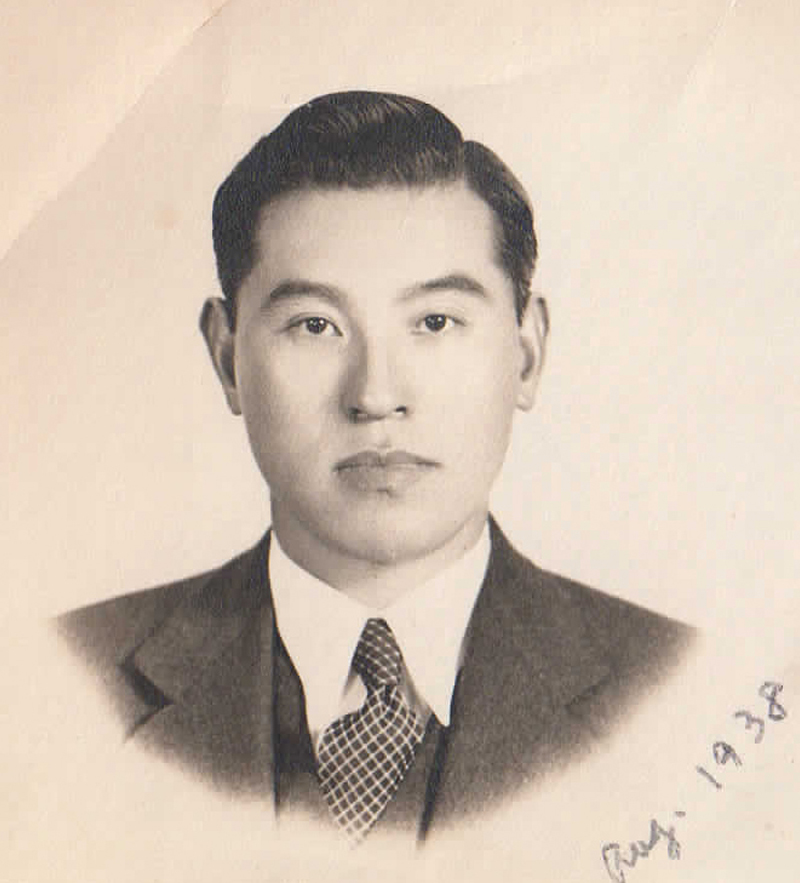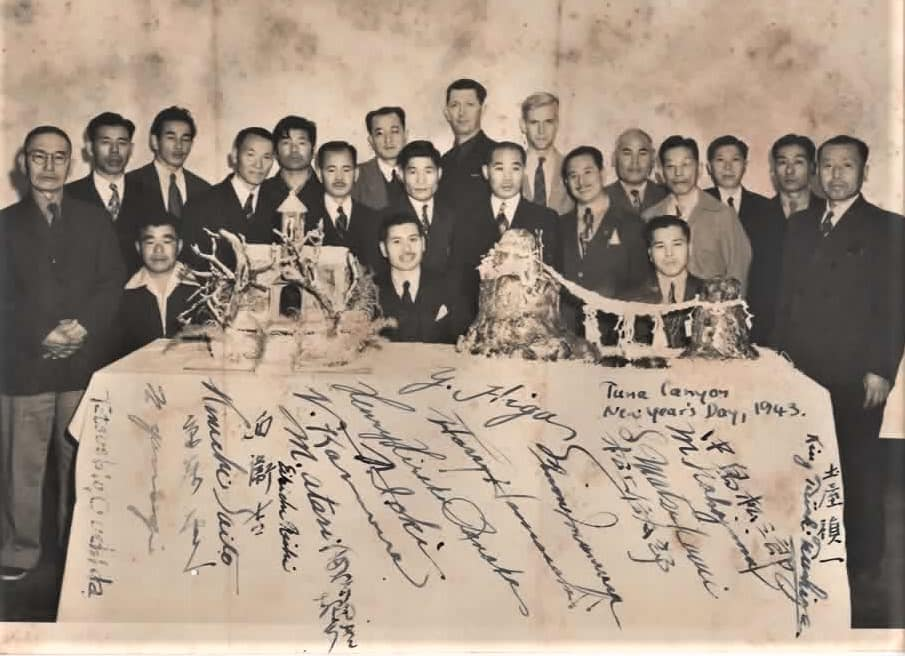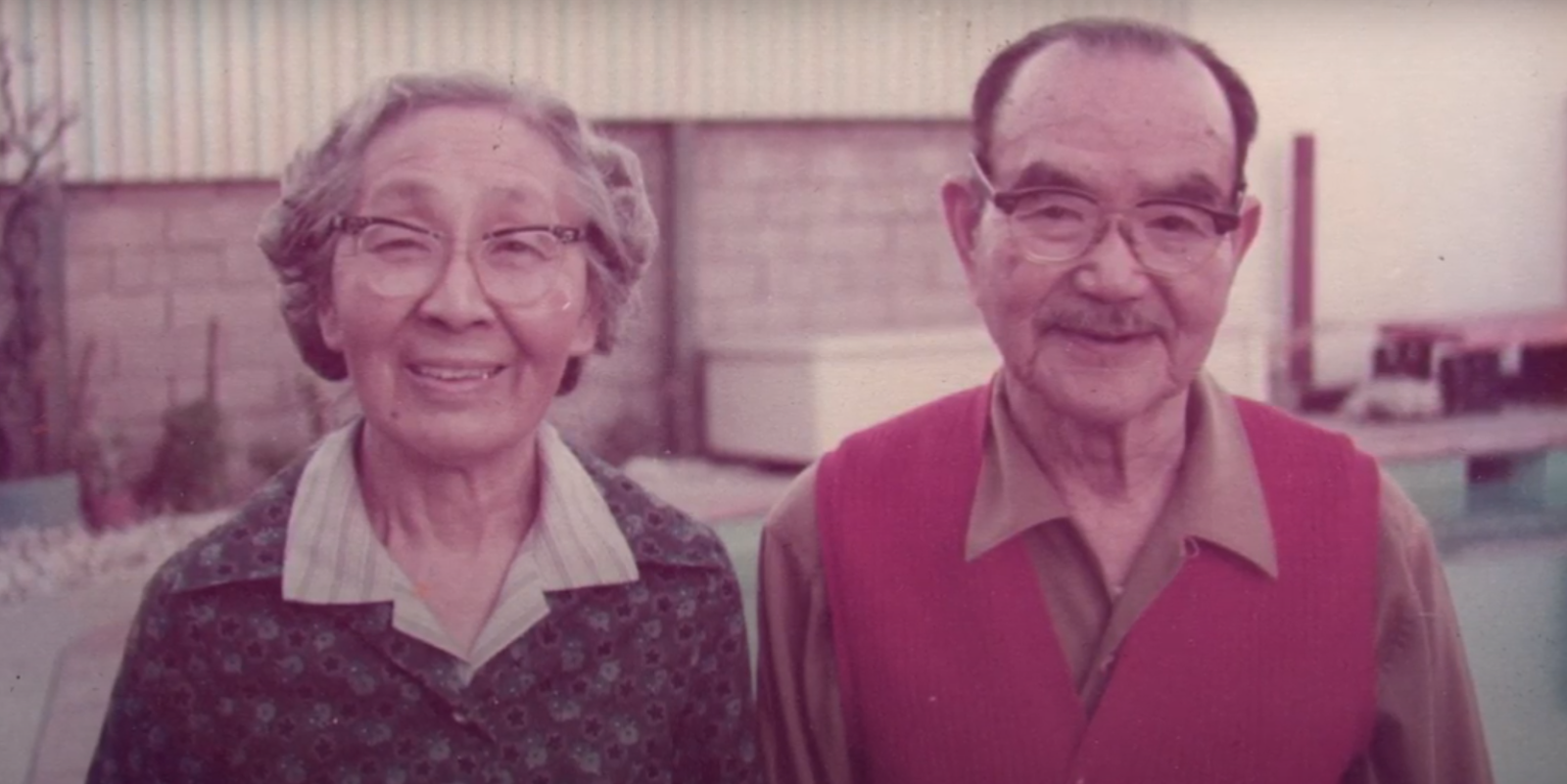Human Rights: Japanese Incarceration during World War II - Tuna Canyon Internment Center
Introduction
The first person of Japanese origin to visit California is said to be Oguri Jukichi whose disabled ship drifted for 484 days across the Pacific Ocean toward Santa Barbara. A Russian fur trading vessel rescued the sailors and took them to Russia’s California colony, Fort Ross, later to be returned to Japan. Despite the efforts of the samurai-led Wakamatsu Tea and Silk Farm California colony of 1869, large-scale Japanese immigration to the United States truly began after the Meiji Restoration ended four centuries of Japan’s isolation. By the 1880’s economic deprivation and increased urbanization pushed Japanese workers to seek work overseas as contract laborers. By 1910 about 400, 000 Japanese lived and worked on the Hawaiian Islands or the west coast of the United States.
Young male sojourners (Nikkei) came seeking jobs, some fishing and about 2/3 farming California’s rich land. After working for decades, the middle-aged men wrote home for “picture brides” to whom they were married by proxy. The young women then crossed the ocean to form families with their new husbands. Unfortunately, laws, including the Chinese Exclusion Act of 1883 and the California Alien Land Law of 1913, sharply restricted the immigrants from both citizenship and land ownership. Despite these restrictions the Japanese families (ie) worked hard, and other farmers began to resent their success. When war broke out with Japan in 1941, Executive Order 9066 ordered internment camps built for enemy aliens as a matter of “national security.” This law eventually incarcerated at least 110,000 persons of Japanese ancestry, as well as German and Italian “aliens.”
Daisho Tana
 The untroubled life of Shin Buddhist minister Daisho Tana would be altered forever on February 19, 1942 when President Roosevelt formalized Executive Order 9066 - better known as the instruction to detain all persons of Japanese ancestry living in the United States. After the attack on Pearl Harbor the previous December, many Americans held negative opinions of Japanese-Americans, labeling all those with Japanese ancestry as traitors to the United States and usurpers of their peace. The formal language used by President Roosevelt in his Executive Order hailed that the internment of Japanese-Americans was necessary to ensure “protection against espionage and against sabotage to national-defense”. For Daisho Tana and his family, however, such frenzied and prejudiced thinking would disrupt their lives until the conclusion of the war three years later.
The untroubled life of Shin Buddhist minister Daisho Tana would be altered forever on February 19, 1942 when President Roosevelt formalized Executive Order 9066 - better known as the instruction to detain all persons of Japanese ancestry living in the United States. After the attack on Pearl Harbor the previous December, many Americans held negative opinions of Japanese-Americans, labeling all those with Japanese ancestry as traitors to the United States and usurpers of their peace. The formal language used by President Roosevelt in his Executive Order hailed that the internment of Japanese-Americans was necessary to ensure “protection against espionage and against sabotage to national-defense”. For Daisho Tana and his family, however, such frenzied and prejudiced thinking would disrupt their lives until the conclusion of the war three years later.
Daisho Tana was born on March 20, 1901 in Kyoto, Japan. While only a few details of his early childhood are known, he graduated from the Kyoto Buddhist College as a young man and immigrated to the United States to work as a priest in the Buddhist Mission of North America. Many years later, Daisho married a woman named Tomoe, and the pair would have three children together. In March of 1942, Daisho was arrested in Lompoc, California where he lived and worked as a Buddhhist priest. The first Japanese-Americans to be targeted and detained were primarily community and spiritual leaders as well as Issei, a Japanese term meaning first generation immigrants who settled somewhere else than Japan. As Daisho fit into both of these divisions, he was considered by the FBI to be incredibly dangerous.
Daisho was taken to the Tuna Canyon Detention Center located in the Tujunga district of Los Angeles. Formerly a Civilian Conservation Corps (CCC) campground, Tuna Canyon was one of the first of these detainment centers to house Japanese-Americans before they were transferred permanently to the more isolated centers that were spread across the American southwest. Tuna Canyon featured enormous guard towers, armed military personnel, flood lights, and twelve-foot tall barbed wire fences. These fences served to keep the detainees from escaping, but additionally as a way to ensure that information was not being passed to/from outside sources (residents of Tuna Canyon were forced to stay at least ten feet away from the fence when their families came to visit).
Daisho Tana kept a diary during his internment that provides not only insight into what life was like, but how the consciousness and perspective of a religious man was changed by this experience. The posthumous publication of Daisho’s diary by his wife highlights the injustices Japanese-Americans faced during the war. Incarcerated for his ethnicity, Daisho Tana utilized internment to become more introspective, revive his spirituality, and connect on a deeper emotional level with his wife and children. Daisho was released from custody on April 3, 1946. He eventually settled in Palo Alto, California where he continued his work as a Buddhist priest until his death in 1972. His story is one of resilience, adaptability, and faith.
Pictured: Portrait of Daisho Tana, 1938, from Tuna Canyon Detention Station Coalition, https://www.tunacanyon.org/digital-history/biographies/daisho-tana/
Fritz Caspari
 The selective relocation of Japanese Americans during the Second World War is a wounding part of American History, one justly taught in schools across the nation. However, the impregnable idea that only Japanese Americans were victims of this “enemy alien” roundup is inaccurate. Though Japanese Americans were targeted to a greater extent, some 11,000 German Americans too were jailed due to their cultural ethnicity.
The selective relocation of Japanese Americans during the Second World War is a wounding part of American History, one justly taught in schools across the nation. However, the impregnable idea that only Japanese Americans were victims of this “enemy alien” roundup is inaccurate. Though Japanese Americans were targeted to a greater extent, some 11,000 German Americans too were jailed due to their cultural ethnicity.
Fritz Caspari was one of these individuals. Born in Heidelberg, Germany in 1914, Fritz was raised in a middle class household. His parents subscribed to two ideologies: pacifism and patriotism. These principles were ingrained in Fritz and his siblings, causing them to reject the Nazi regime as it gained power. As a young man, Fritz read Hitler’s Mein Kampf and was profoundly horrified by the blatant racism and fearful of its expansionist rhetoric - Fritz became immutably opposed to Hitler.
Fritz was awarded the prestigious position of Rhodes Scholar in 1932. He would study at Oxford for the next four years and then received a teaching position at Southwestern University in Memphis, Tennessee. Fritz remained here for an academic term and then returned to Germany where he completed his mandatory military service and finished his doctorate research. At the beginning of 1939, Fritz moved to Southern California and was employed as an Assistant Professor of History, German Language, and Civilization at Scripps College in Claremont, California.
In this same year, relations in Europe were deteriorating quickly - the invasion of Austria and the Sudeten region of Czechoslovakia gained international attention. Due to these heightened tensions, the FBI began composing lists of “security risks”. Japanese, Italian, and German citizens/non-citizen immigrants were added to these lists and closely monitored by the FBI. Given his position as a professor, Fritz was classified as A-2, the most dangerous category. The day after the attack on Pearl Harbor, December 8th, 1941, Fritz and many of his Scripps colleagues were arrested. Despite a very biased “trial”, Fritz was released from federal custody in March 1941 and allowed to continue teaching until he was rearrested in September 1942. It was at this time Fritz was detained at the Tuna Canyon Detention Station located in the Tujunga region of Southern California. The Red Cross had formerly declared the conditions in the camp inhumane and against the Geneva Convention - yet the camp remained in operation until 1943.
Later in his life Fritz would recall how infuriating these conditions were; he and all the other prisoners’ status as enemy aliens combined with the guard’s attempts to estrange the ethnic populations meant that it was difficult for men like Fritz to collectively fight against the corruption in the camp. Fritz was persistent however, and formed personal relationships with the Italian and Japanese leaders within the camp.
Fritz was parolled once again in 1943. He married his wife, Elita, the following year and they had four children. Fritz moved his family to Germany in the 1950’s and began working for the Foreign Service - his aim was to rebuild Germany and reestablish connections with other nations that Hitler had wantonly destroyed. Fritz never spoke of his time in the internment camps until he was very old, and died in 2010 at the age of 96.
Pictured: Group shot of Tuna Canyon detainees, 1943, from Tuna Canyon Detention Station Coalition, https://www.tunacanyon.org/digital-history/biographies/fritz-caspari/
Kesao Karasawa
 Often during the study of history, romanticizing people, events, and places becomes much too easy as viewing history through rose-tinted glasses prohibits the disagreeable and serious details from shining through. The internment of Japanese Americans during the Second World War is one such occurrence - children across America learn of this forced relocation of over 127,000 Japanese Americans (⅔ of which were citizens), but do not delve deeper into the trauma endowed within those interned that stayed with them their entire lives.
Often during the study of history, romanticizing people, events, and places becomes much too easy as viewing history through rose-tinted glasses prohibits the disagreeable and serious details from shining through. The internment of Japanese Americans during the Second World War is one such occurrence - children across America learn of this forced relocation of over 127,000 Japanese Americans (⅔ of which were citizens), but do not delve deeper into the trauma endowed within those interned that stayed with them their entire lives.
Kesao Karasawa was born in Japan in 1891and immigrated to America in 1907 - he was thus classified as Issei, a first-generation immigrant that settled somewhere outside of Japan. Much of Kesao’s life has not been documented except for the private journals he kept during the internment and the federal records compiled that do not include much more than place of birth, schooling, etc. Thankfully, his family has worked closely with the Japanese American National Museum (JANM) to preserve his diary entries to gain insight into what life within the internment facilities were truly like.
Kesao and his wife both worked as retail sales clerks in San Diego and had four children over the course of six years (1922-1928). In February 1942, Kesao was arrested by the FBI and taken to a local prison. In his diaries, he recalls how humiliating this was for him - fingerprinted and photographed like a common criminal, Kesao was led to a large cell and shared it with 29 other prisoners for the night. He and his fellow inmates were provided with dilapidated mattresses, thin blankets, and food Kesao described as tasting like dog food. The following morning, they were “packed into an immigration truck like luggage” and transferred to the Tuna Canyon Detention Station in the Tujunga district of Southern California. He was later reunited with his wife and their children at the Poston Relocation Center near the town of Parker, Arizona and remained there until the end of the war in 1945.
After his internment, Kesao never spoke about it. From his diaries, we know that his time confined in the Arizona desert did deeply affect him, as in one entry he lamented that a “weak-hearted person could go insane”. Kesao and his immediate family too were in the camps together, and their strong familial bond as well as their shared trauma of being incarcerated certainly allowed for them to privately grieve with one another. The Japanese-American community in Southern California was an important facet of Kesao’s healing; the Pacific Citizen, a national newspaper founded in Los Angeles in 1929 reported that Kesao donated money to the Japanese American Citizen League (JACL) in 1957. This money Kesao had received from the Department of Justice, after he and hundreds of other Japanese-Americans that had been displaced by the internment order filed for evacuation reparations. Along with his community and his family, Kesao Karasawa was able to reacquaint himself with his former life, but the emotional scars inflicted on him by the internment did not remain in the abandoned barracks in the Arizona desert.
Pictured: Kesao Karasawa and his wife Chizuko.
Lesson Plans
To better understand the biographies we have provided, and to contextualize the field trips to the historical sites, a series of lesson plans have been provided for the use of students and faculty. They may be read online, downloaded, and printed as needed.
Understanding the Past
Click here to download "Enemy Alien Incarceration" lesson plan.
Applying to the Present
Click here to download "Muslim Detainees After 9/11" lesson plan.